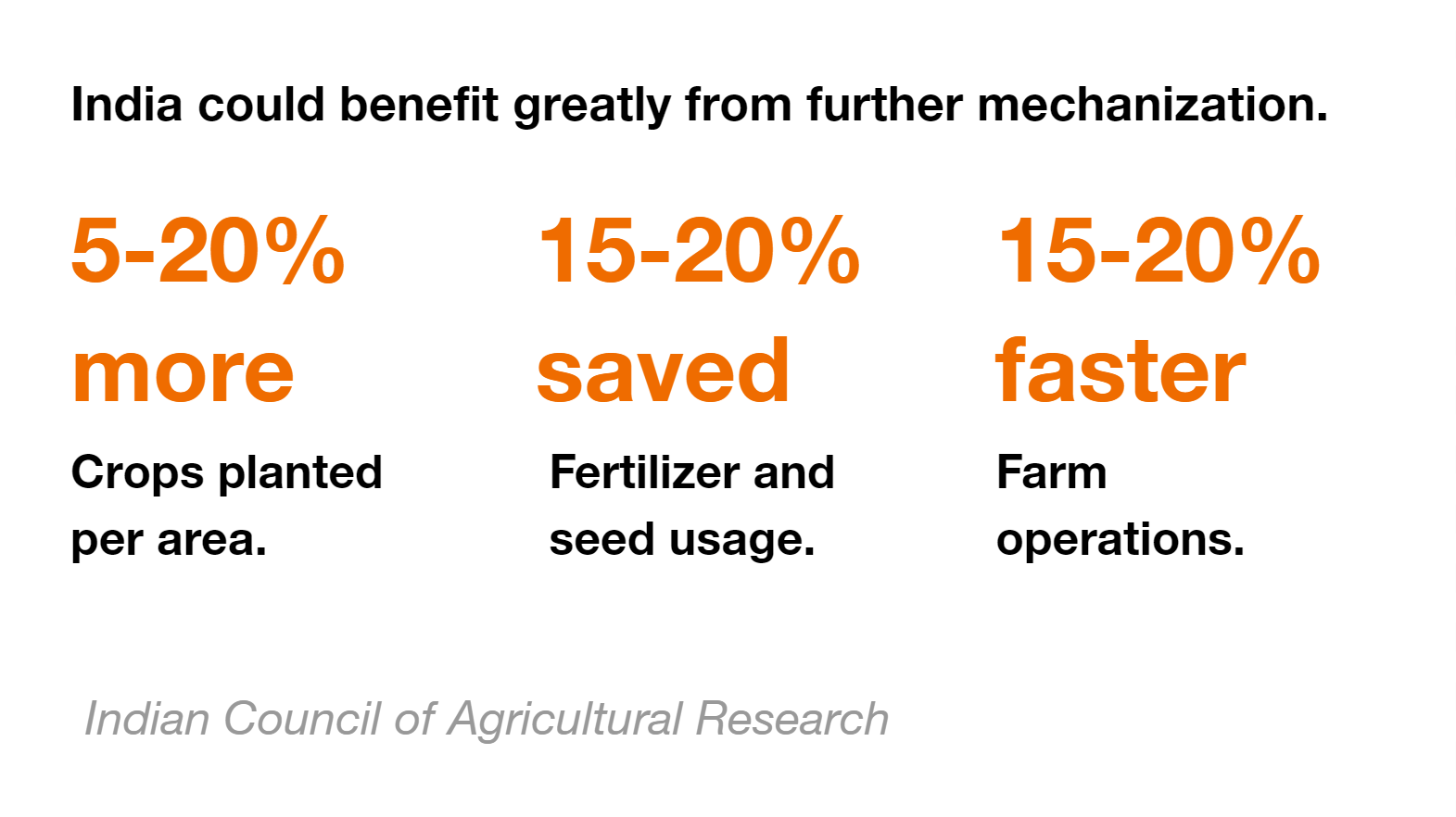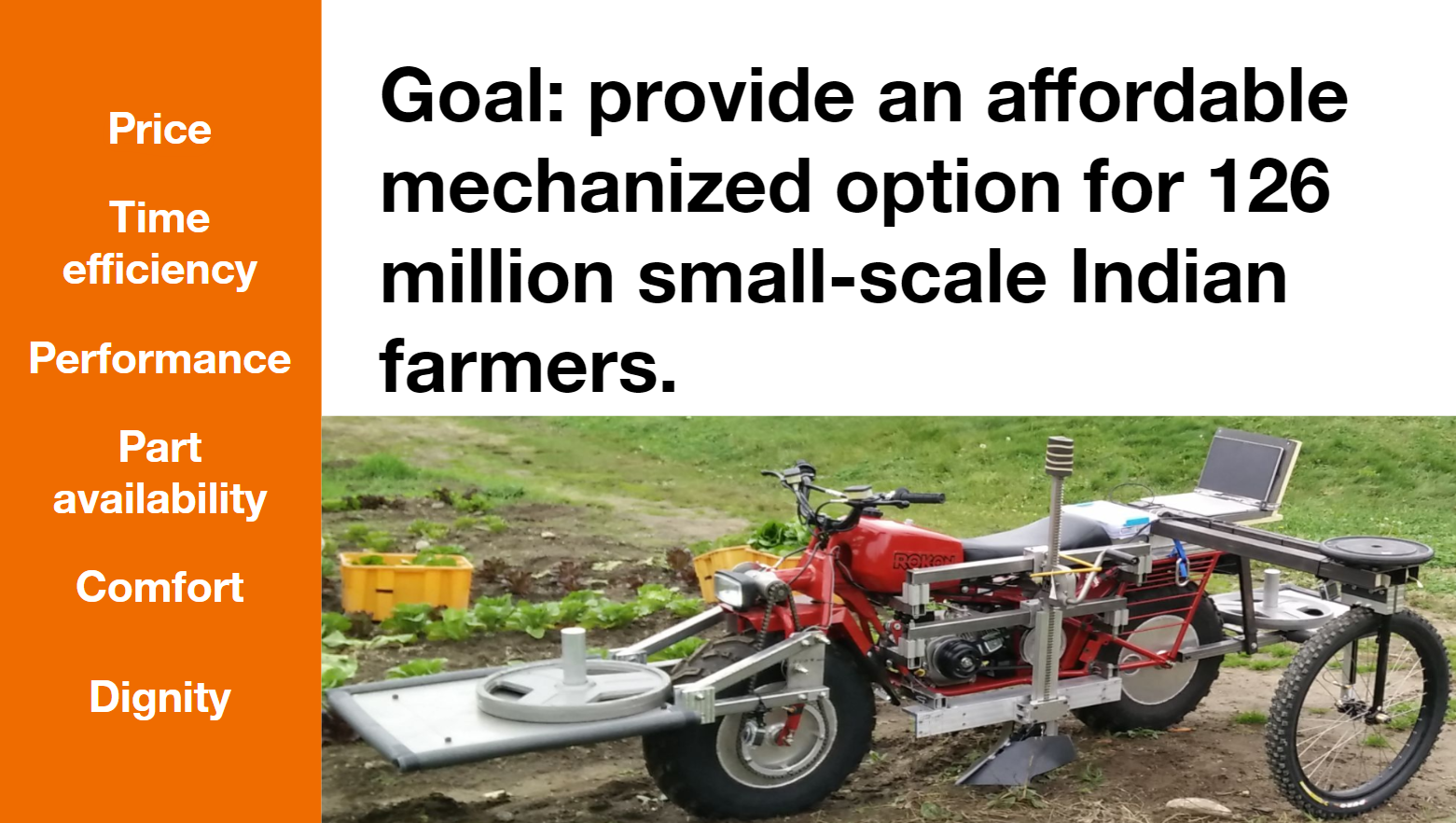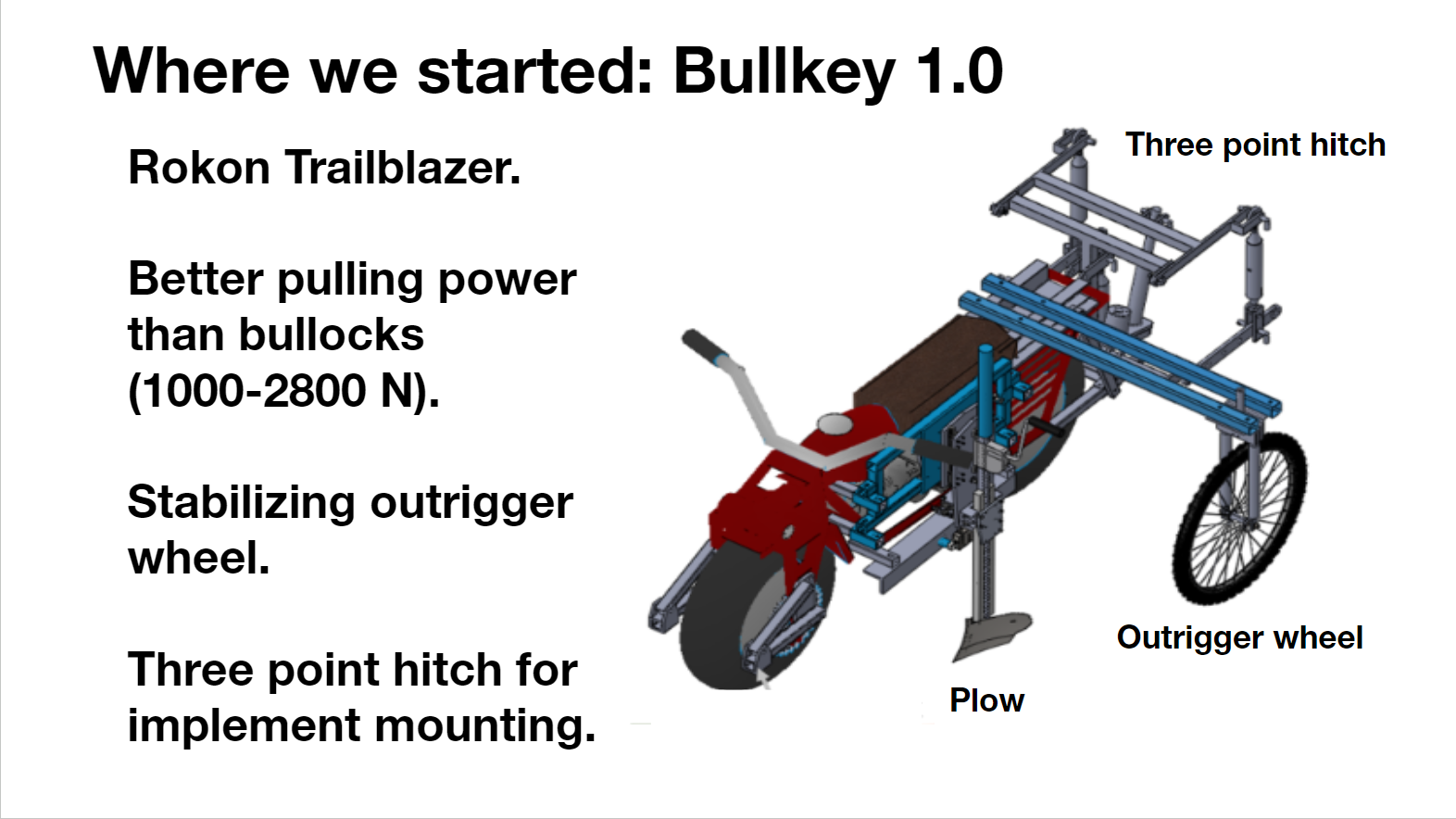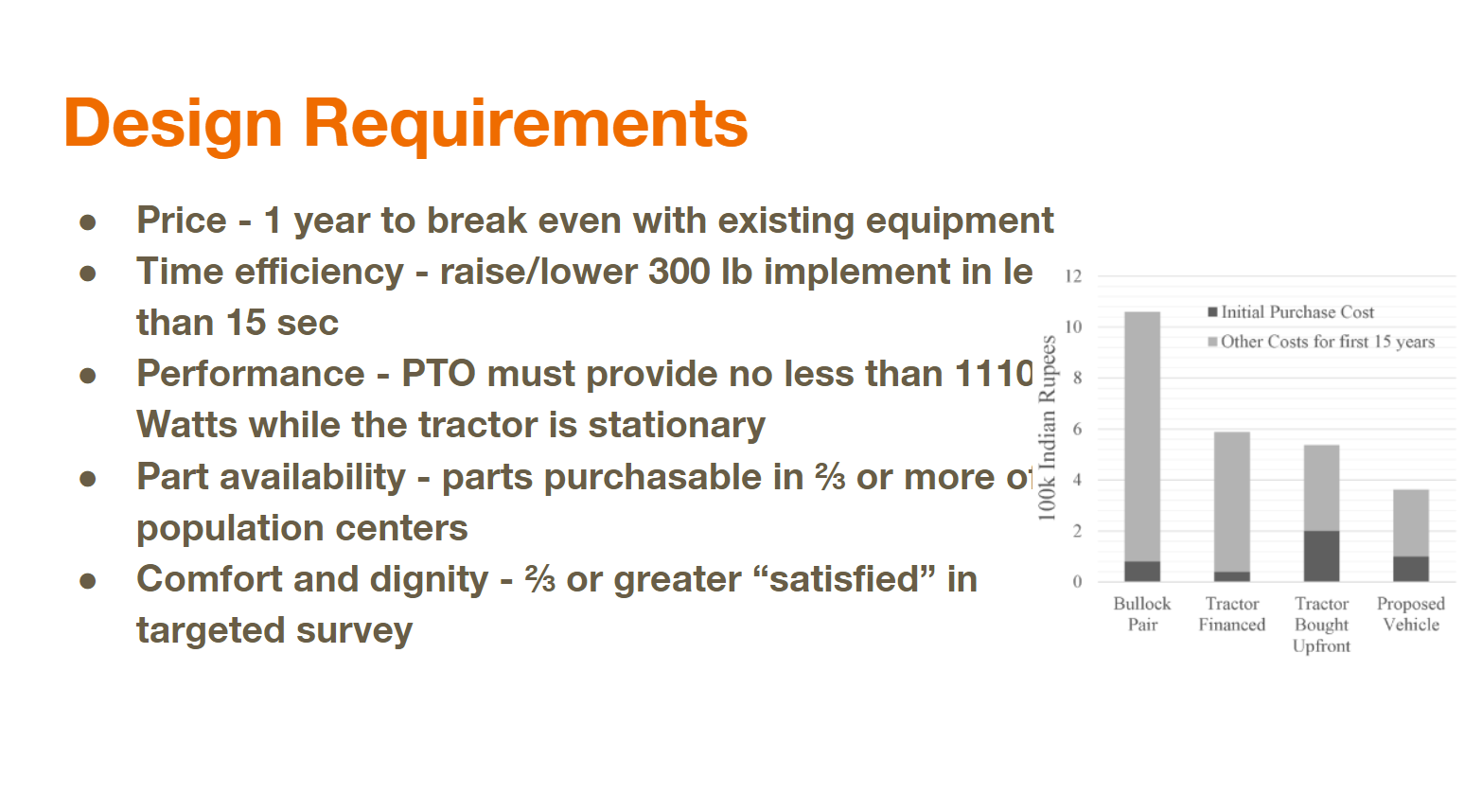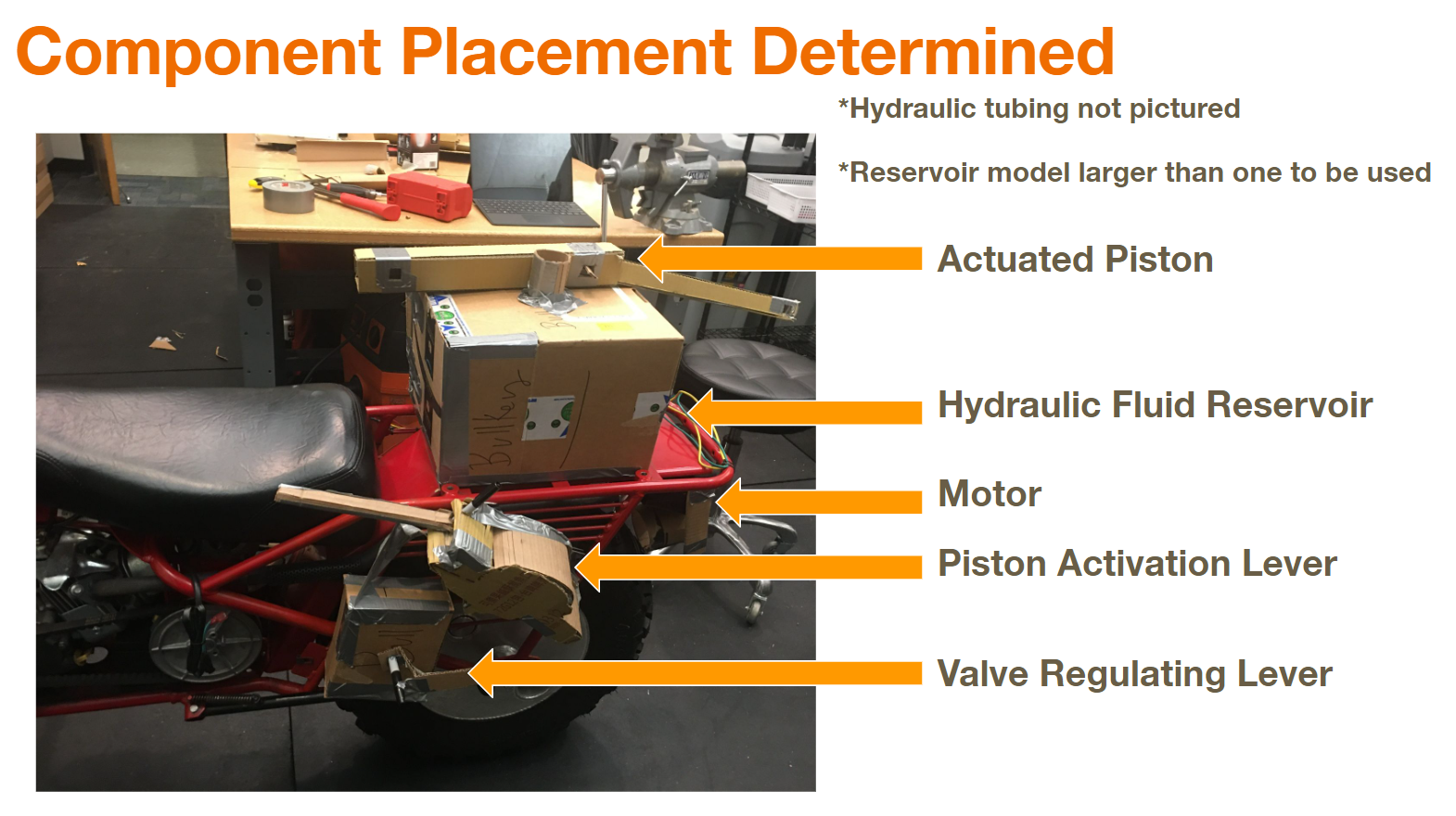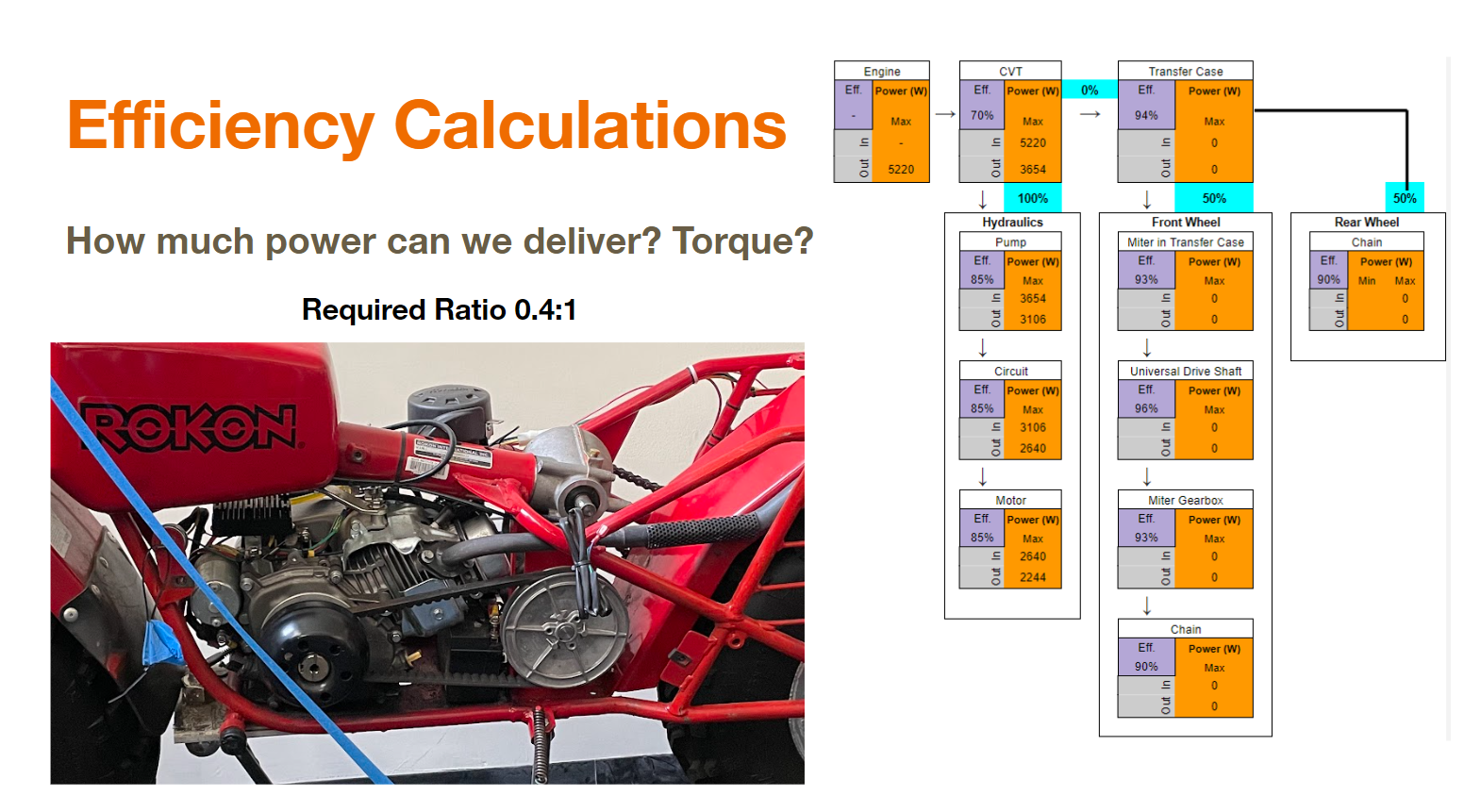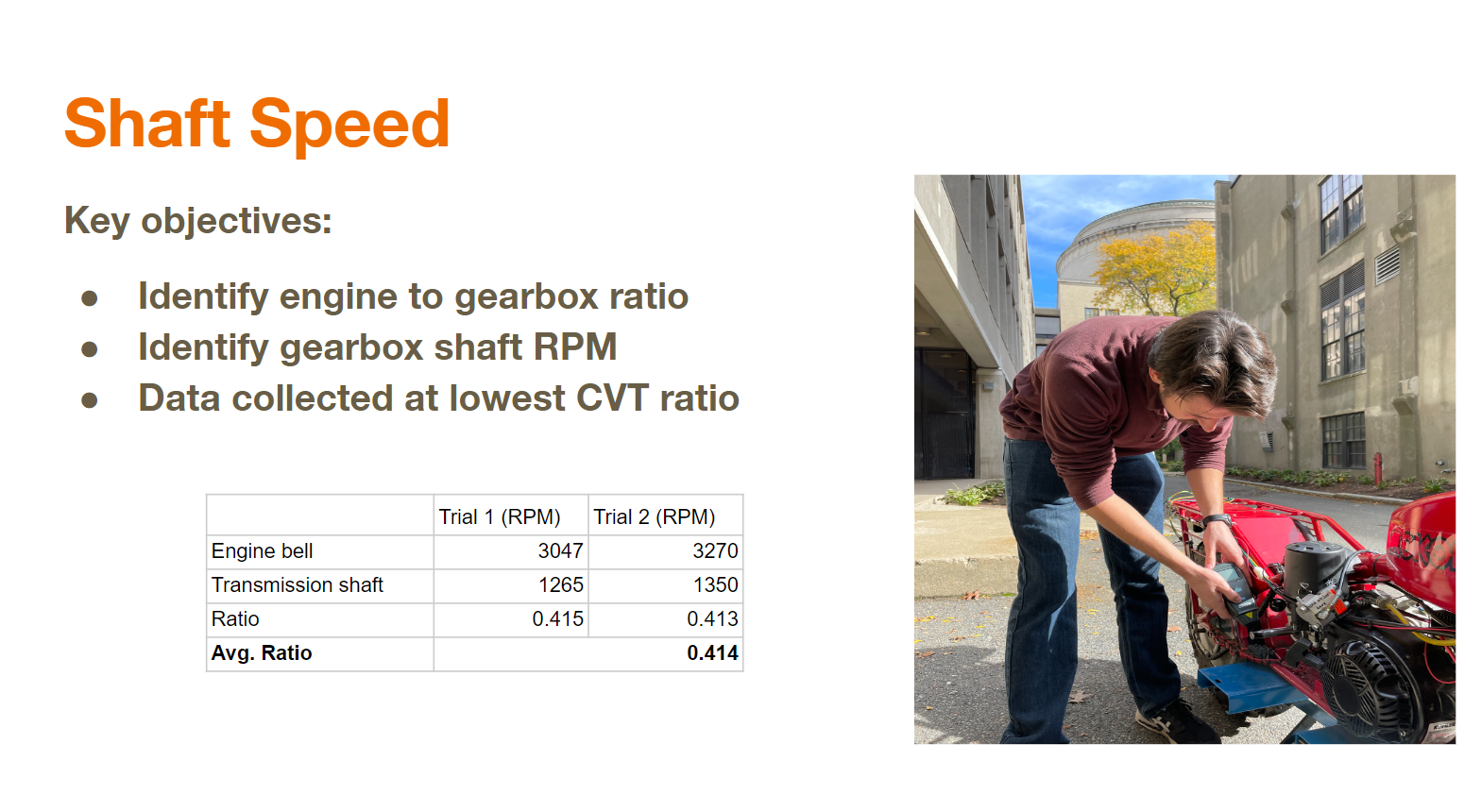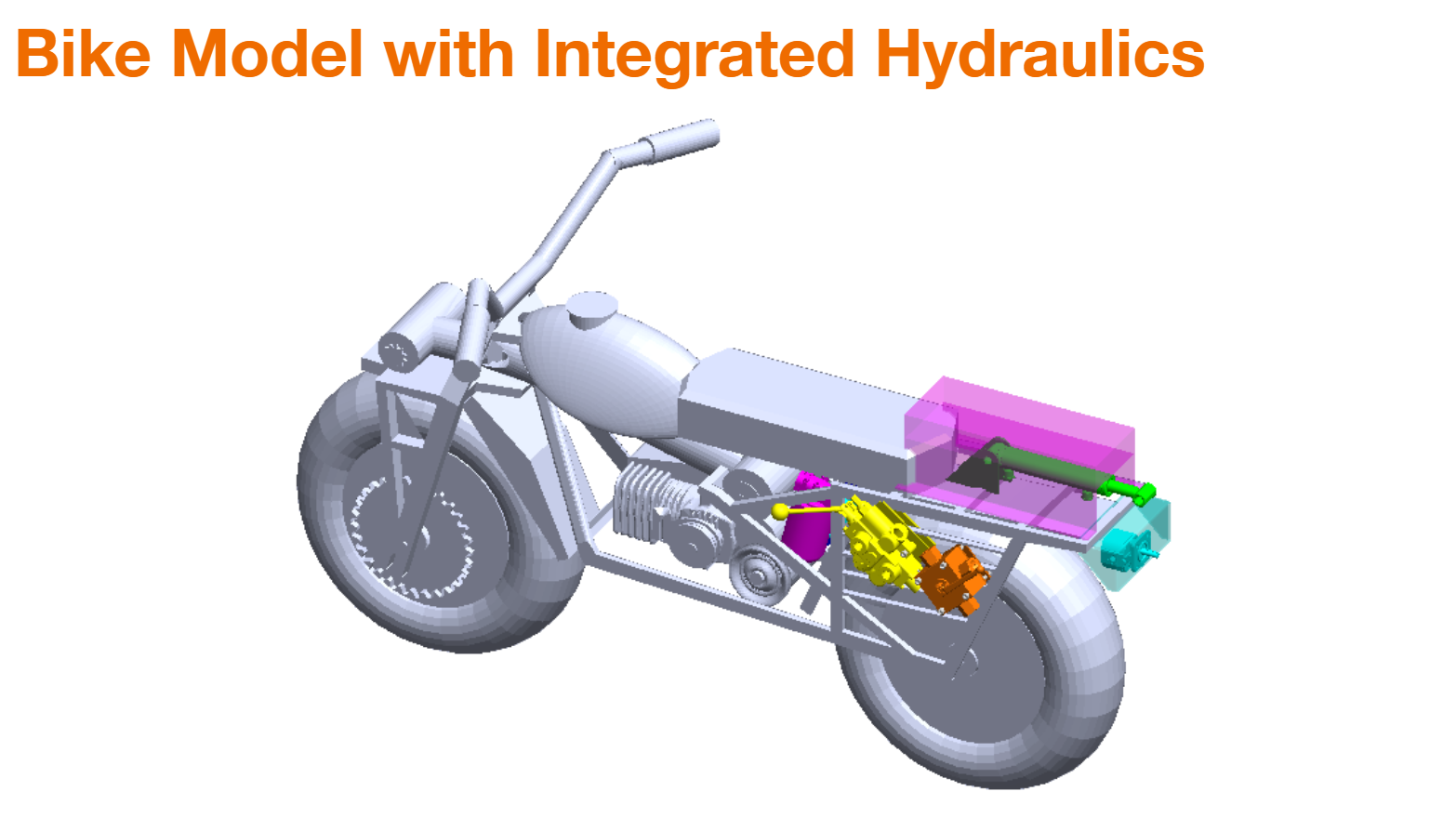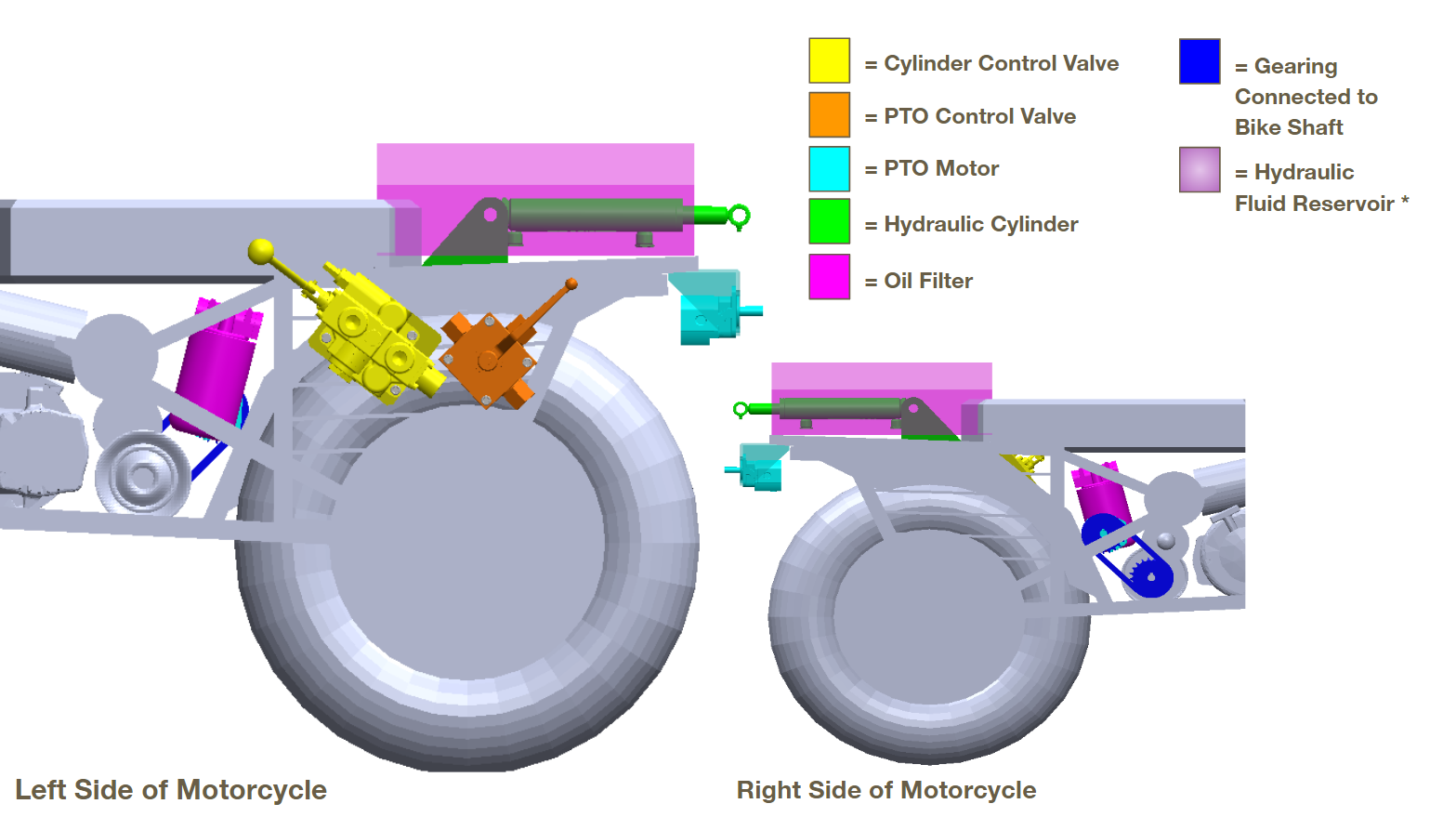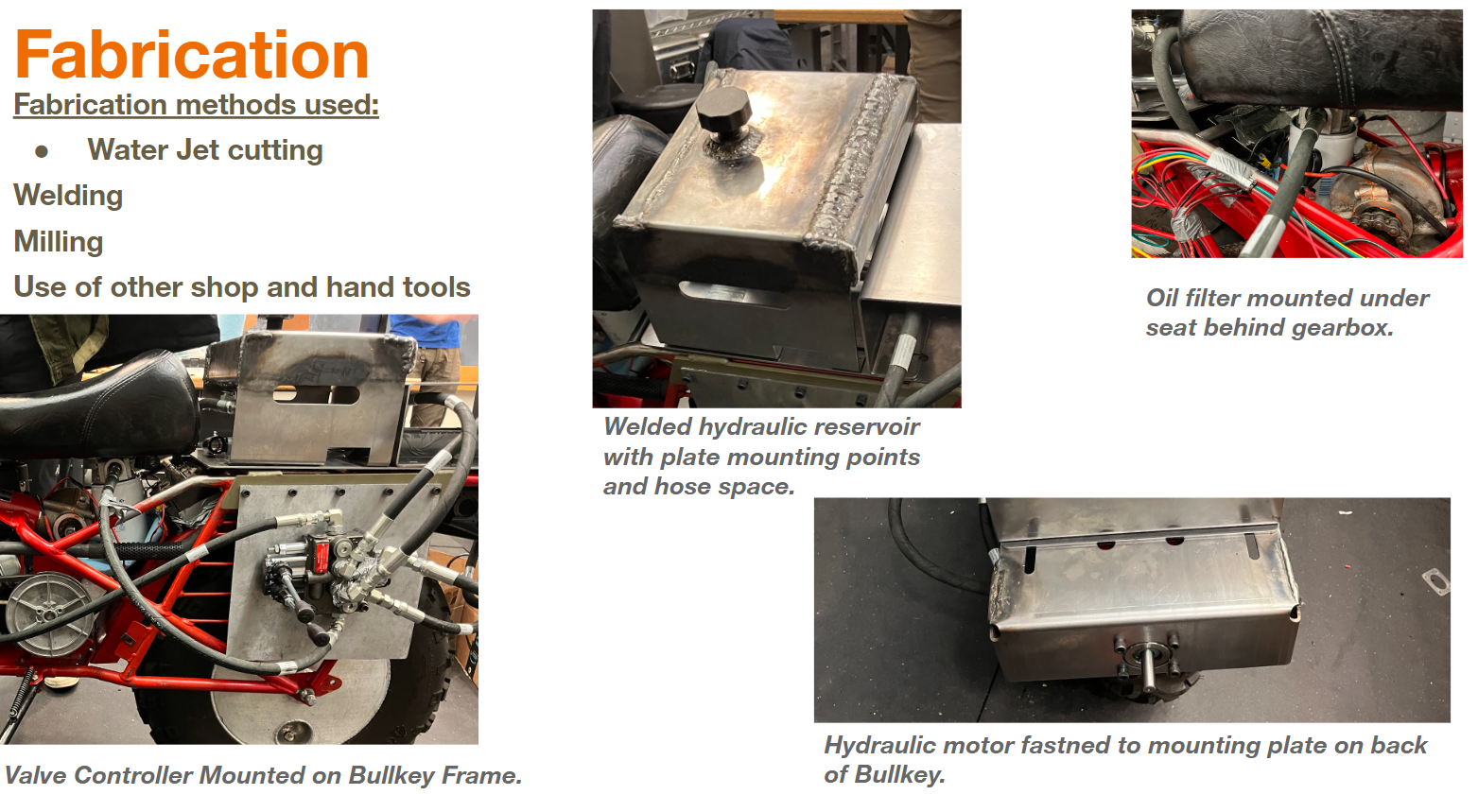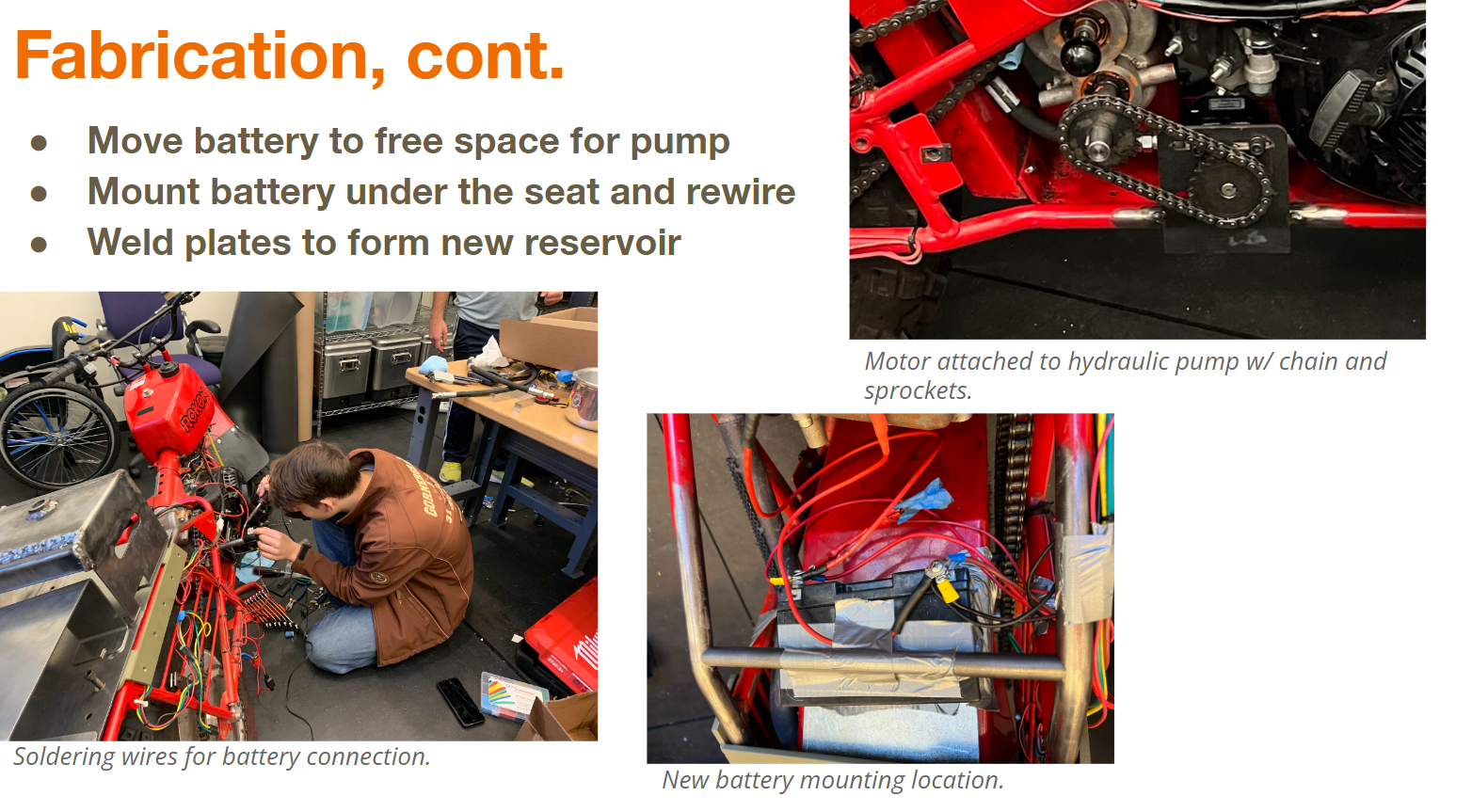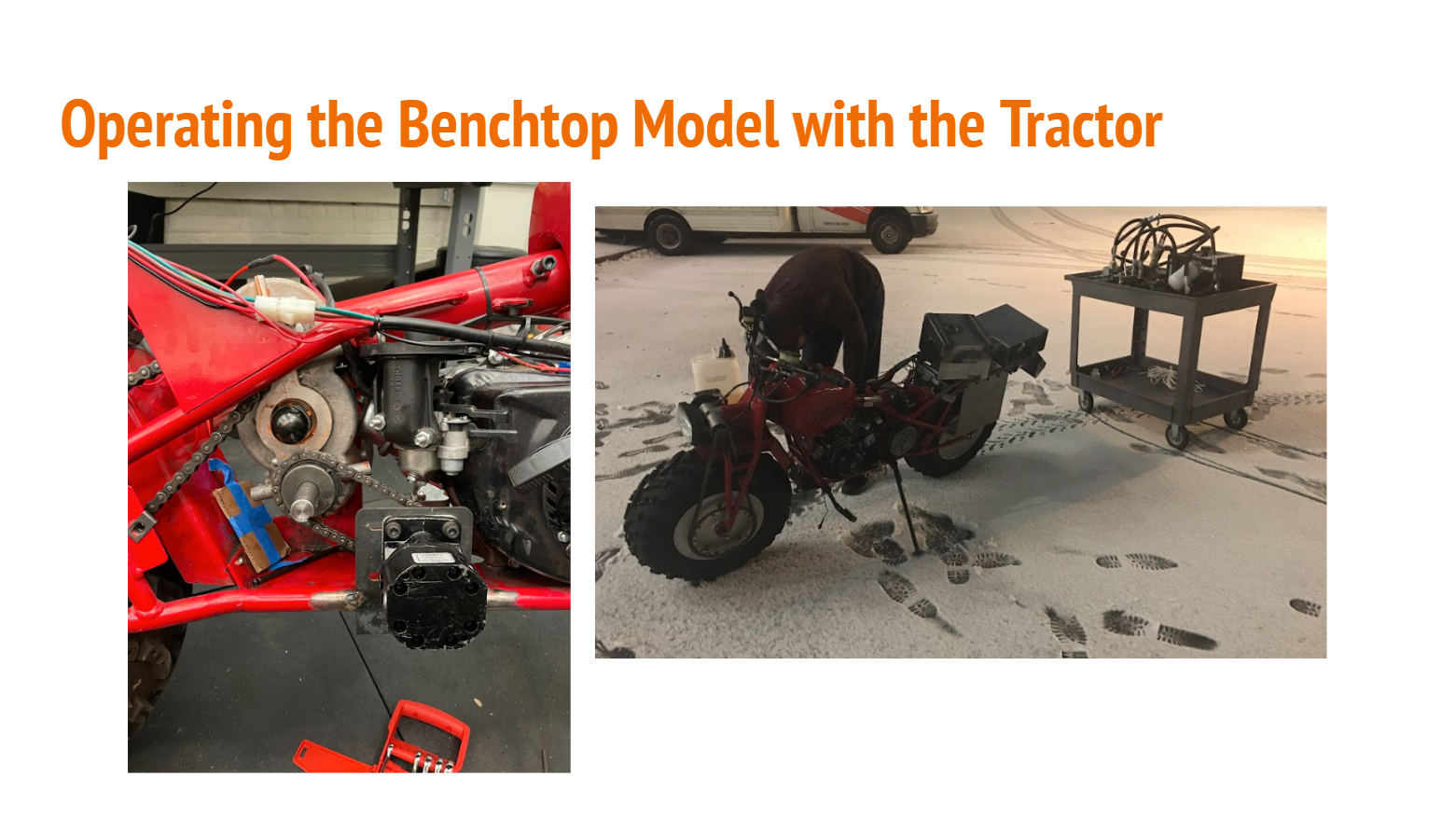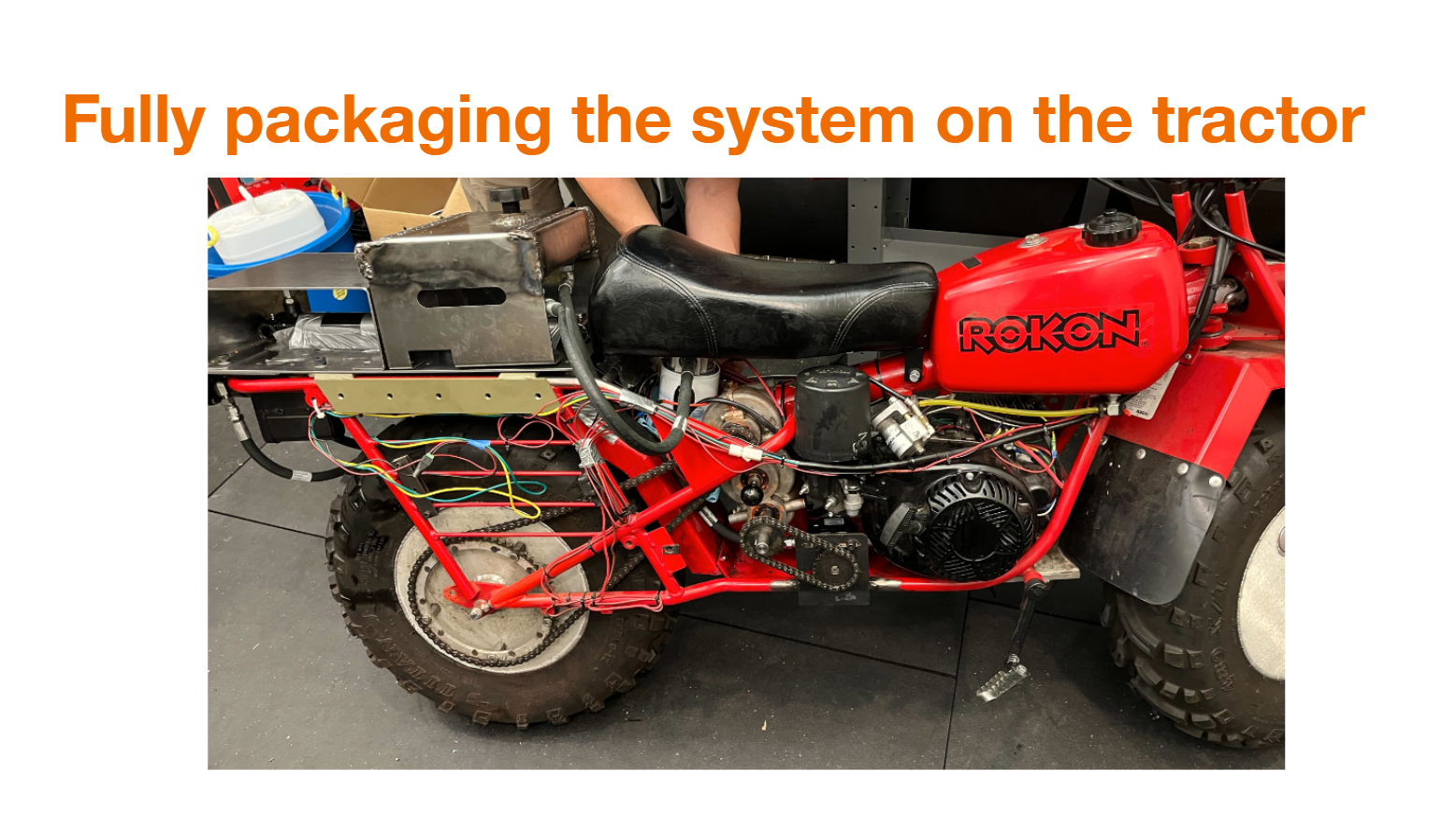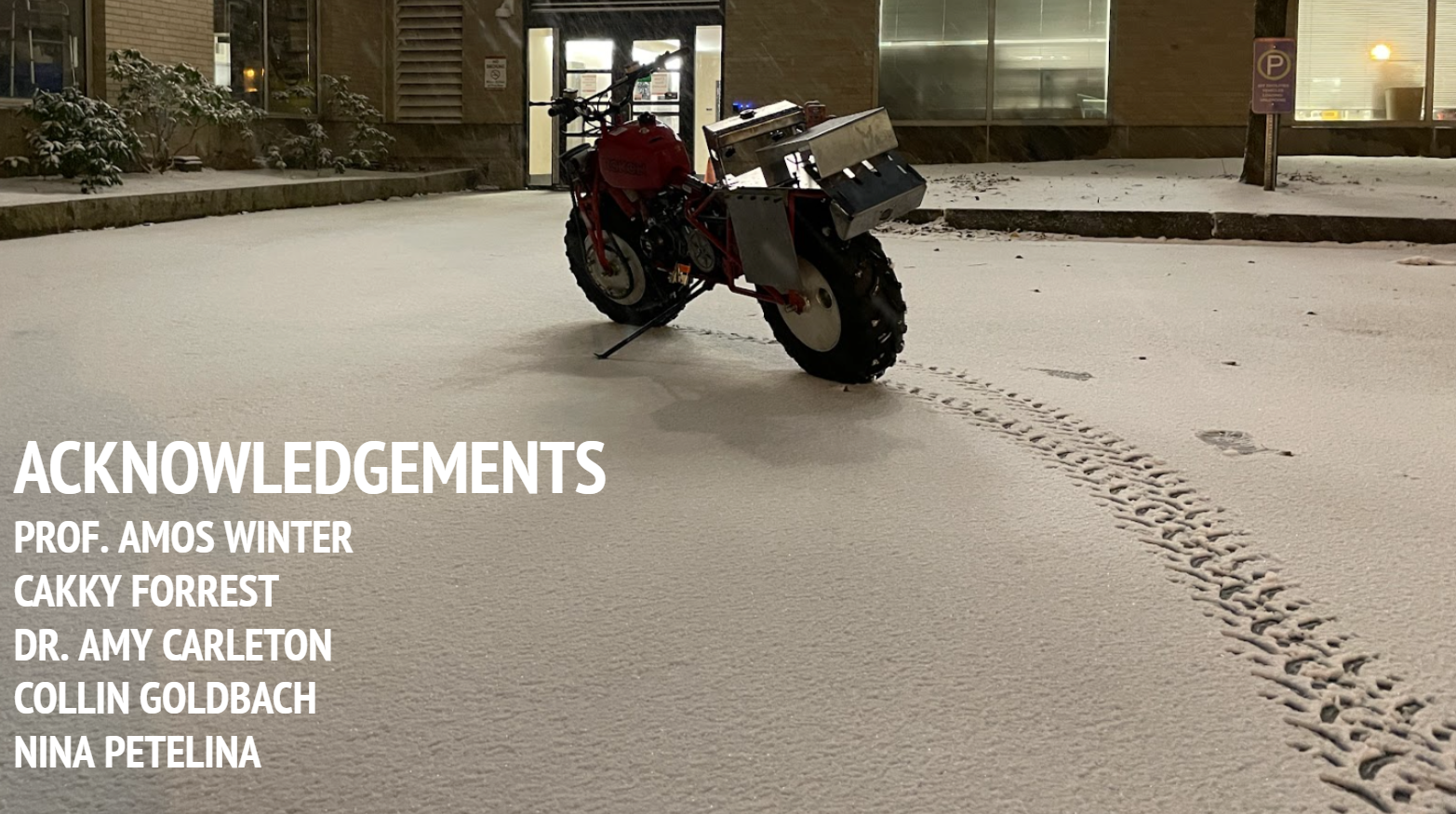Bullkey Capstone Project
In the fall of 2022 during my first senior semester at MIT, I was in a capstone class called Global Engineering. In this class teams were formed with mixed groups of graduate and undergraduate students and each team worked on a semester long capstone project. At its core the project involved helping to design and engineer a product with the goal being to tailor it to emerging markets and economies. Each team was given an international partner to collaborate with in the country of interest. I was part of a team called Bullkey and our project involved taking a motorcycle and modifying it to work as a makeshift tractor for small farms in rural India. Over the course of this project we collaborated with the Sehgal Foundation, an indian based NGO focusing improving quality of life via agriculture. They provided key information about the context we are designing for and much more important info about agriculture in India. On this page I will take you through our design process from start to end via out final presentation slides. I would like to give special recognition to my group members for this project: Ben Lerman, Luke Sullivan, and Dylan Sequeira, as it was a group effort between the four of us.
Presentation
This project is motivated from the problem of a lack of mechanization in the indian agriculture industry. The data from the Indian Council of Agricultural Research shows that there is a great opportunity to increase agriculture productivity and profit if more mechanization were introduced. In agricultural centers closer to urban populations an increase in mechanization is already underway with products like tractors and planters already being proliferated. It has been a bigger challenge to mechanize smaller more rural farms because for many of the farmers the cost of these products is sually not affordable. There is also the issue of lack of acess to repair centers if machine parts break and the fact that many of these smaller farms have terrain not conducive to large scale tractors.
After we learned more about the current issues by talking with the Sehgal foundation and some indian farmers, we set forth with our project and a few key goals to keep in mind over the course of the project.
There was some previous work that happened on this project from some students at the Gear Lab at MIT. The previous people had started out with a stock motorcycle called the Trail-Breaker (affectionately named “Bullkey” by the team) from a company called Rokon, which is already suited for use off pavement in the wilderness. They had modified this motorcycle to add some tractor functionality, including attachements like a plow, outrigger wheel and a 3-point hitch. The Bullkey already had a better pulling power than bulls or bullocks, which used for standard tasks like plowing on small rural farms in India.
After discussing more the the Sehgal Foundation, we determined that the Bullkey tractor could be sucessfully proliferated in India if it were able to fill a roll between the low cost and high cost farming implements. The highest cost machines used are big industrial tractors and they provide great performance while the lowest cost implements used are bullock pairs, which are relatively cheap but do not provide as reliable of performance. Our group also determined via these interviews that while our product was at a reasonable lower cost compared to the bigger tractors, it needed more features and functionality in order to be competitive. One of the best ways to achieve this was by further developing Bullkey so it could power external farming attachments such as threshers and sprayers.
Our group did an analysis of various commonly used attachments in farming and determined that a Power Takeoff (PTO) would provide the most versatility to the machine compared to some of the other ones we looked at like a hyrdaulic lift and chemical sprayer.
Above is a power takeoff diagram, which essentially allows for the transfer of rotational mechanical power and torque to external implements. In farm work Power Takeoff powers many devices like wood chippers, threshers and even generators.
As we continued with our research into farming implements, we discovered that hydraulics were becoming more prevelant in India for mechanized work, with service centers opening up in many places where people can buy parts. Due to this fact we decided to power our power takeoff using a hydraulic system, allowing for a hydraulic cylinder to be included to introduce even more functionality to Bullkey.
Our group was given a benchtop hydraulic system to do some testing and modeling with. Its diagram along with lever controls is outlined above. We decided it would be best to power this hydraulic PTO from the gearbox of the actually motorcycle if we could get the proper power from the engine.
Taking into account all the information from our research, interviews, and technical capabilities our team put together the design requirments above.
In order to figure out where the hydraulic PTO componenents would fit on the motorcycle, I mocked them up out of carboard and tried different configurations. We were focused on finding the most ergonomic place for the rider to operate controls and the best place for the components to be linked easily.
Final position of the components is shown above except for the hydraulic piston. We discovered that the benchtop hydraulic reservoir we were working with held more fluid than needed for the system, so our team decided to fabricated a smaller one that would also for the hydraulic cylinder to fit underneath it.
Our group also created an efficiency calculator to figure out the proper gear ratio needed between the motorcycle gearbox and the hydraulic motor to provide the most power. We determined the proper ratio to be 0.4:1.
We later confirmed the proper gear ratio by running the motorcycle CVT and measuring the gearbox RPM.
Above is the Bullkey CAD model with the added Hydraulic components.
Above is a more precise view of the Bullkey CAD model with the added Hydraulic components. Placing these componenets in CAD allowed us to design all the connecting plates and flanges for manufacturing.
Above and below show the fabricated parts positioned on the bike. The fabrication involved a lot of different metalworking practices, like water-jet cutting milling and welding.
To give context to the previous fabrication slides here is the benchtop hydraulic model we started with.
After a proper assembly of our components we decided to run a test where our benchtop hydraulic PTO would be run from the motorcycle. This would help us verify if our calculations were correct and give us more confidence for assembly the system on Bullkey. Below are some videos of our test which we conducted outside during a Boston snow shower!
